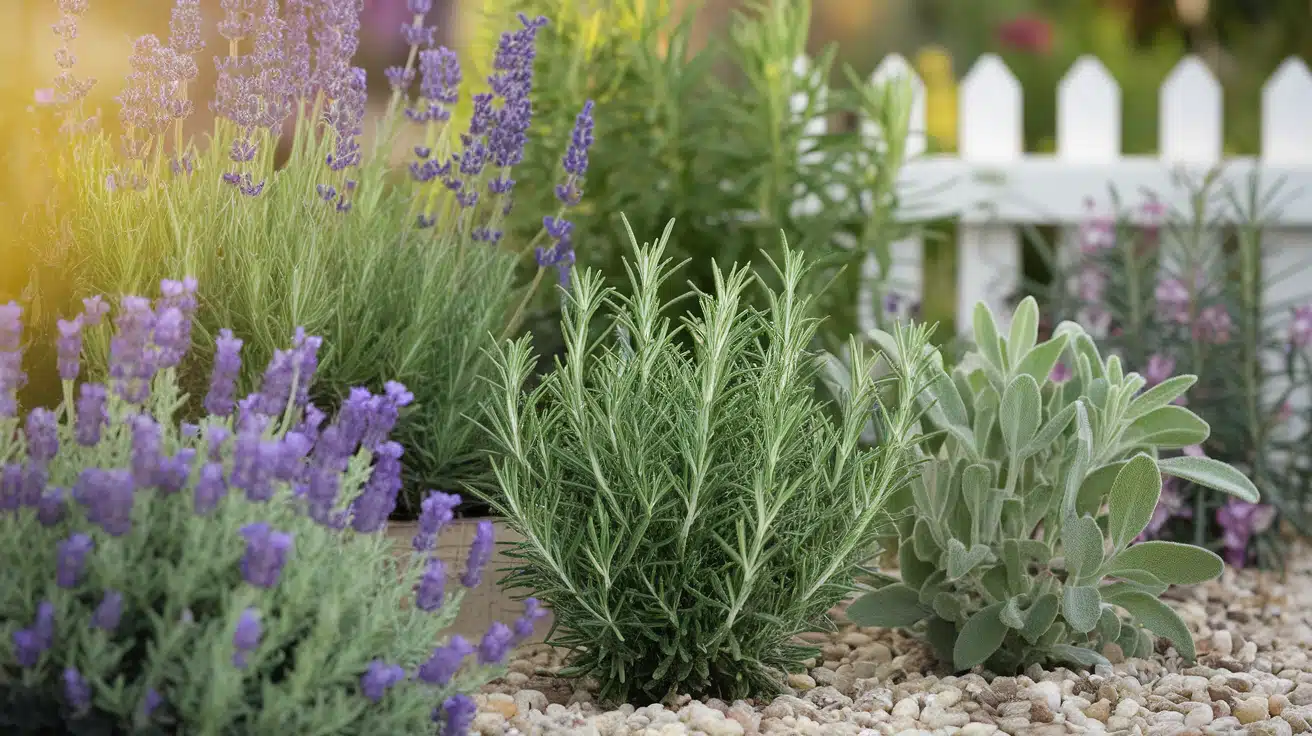Are you tired of finding your favorite plants turned to mush overnight? You’re not alone in this battle against garden slugs. These slimy visitors can destroy months of hard work in just a few nights, leaving behind trails of destruction and frustration.
But here’s the good news: you don’t need harsh chemicals or expensive gadgets to win this war. Nature has already provided the perfect solution through plants that slugs simply hate to eat.
From aromatic herbs that make their stomachs turn to fuzzy leaves that feel like sandpaper on their soft bodies, certain plants act as natural bodyguards for your garden. These are classic repellent plants that slot neatly into beds and borders.
This guide reveals proven slug-resistant plants ideas that will help you create a beautiful, low-maintenance garden. You’ll learn what makes these plants so effective and how to use them strategically throughout your outdoor space.
What Makes a Plant Slug Resistant?
Slugs are picky eaters with clear preferences. They avoid plants that make their feeding difficult or unpleasant. Understanding what slugs dislike helps you choose the right plants for your garden.
Physical barriers work best against slugs. Plants with tough, leathery leaves create surfaces that slugs can’t easily damage. Waxy coatings make it hard for slugs to grip and move across leaves. Hairy or fuzzy textures irritate their soft bodies and discourage feeding.
Chemical defenses provide natural protection. Many plants produce compounds that taste bitter or smell strong. Slugs learn to avoid these after trying them once. Aromatic herbs often contain oils that act as natural repellents.
Growth patterns can outpace slug damage. Fast-growing plants can replace eaten leaves quickly. This survival strategy helps plants recover from minor slug attacks.
Key features that make plants slug-resistant:
- Thick, waxy leaf surfaces that slugs struggle to grip
- Fuzzy or hairy textures that feel uncomfortable
- Strong scents from natural oils and compounds
- Bitter tastes that discourage repeat visits
- Rapid growth that replaces damaged parts
- Tough leaf structures that resist chewing
- Smooth surfaces that make movement difficult
These natural defenses work together to create plants that slugs simply prefer to avoid.
25 Slug-Resistant UK Plants Every Gardener Needs

These proven plants naturally repel slugs while creating beautiful, low-maintenance gardens that thrive in British conditions.
1. Lavender
Lavender’s strong fragrance and oils naturally deter slugs from coming near. This purple-flowered herb creates a lovely scent barrier while attracting beneficial insects like bees and butterflies to your garden.
- Scientific name: Lavandula angustifolia
- Best Garden Uses: Borders, herb gardens, Mediterranean-style plantings, pathways
2. Rosemary
Rosemary produces potent essential oils that slugs find repulsive. This woody perennial herb offers year-round structure and can be harvested for cooking, making it both practical and protective in your garden.
Scientific name: Rosmarinus officinalis
Best Garden Uses: Herb gardens, coastal gardens, drought-tolerant borders, cooking herbs
3. Thyme
Thyme forms dense, aromatic mats that create an effective slug barrier. This low-growing herb releases pleasant fragrances when brushed against and provides excellent ground coverage in sunny spots.
Scientific name: Thymus vulgaris
Best Garden Uses: Rock gardens, herb patches, ground cover, between paving stones
4. Ferns
Ferns have tough, leathery fronds that slugs find difficult to eat and unappealing. These ancient plants bring lush green texture to shady areas and require minimal maintenance once established.
Scientific name: Dryopteris filix-mas
Best Garden Uses: Shady borders, woodland gardens, damp areas, architectural features
5. Lady’s Mantle
Lady’s Mantle has soft, hairy leaves that slugs dislike touching. This cottage garden favorite catches morning dew beautifully and produces clusters of tiny yellow-green flowers that work well in arrangements.
Scientific name: Alchemilla mollis
Best Garden Uses: Cottage gardens, border edges, ground cover, cutting gardens
6. Columbine
Columbine produces unique spurred flowers that slugs tend to avoid. These charming perennials self-seed readily and come in various colors, creating natural-looking displays in woodland settings.
Scientific name: Aquilegia vulgaris
Best Garden Uses: Woodland gardens, cottage borders, wildflower areas, shade plantings
7. Elephant’s Ears
Elephant’s Ears have thick, waxy leaves that slugs cannot easily damage. These bold perennials provide excellent winter interest with their large, rounded foliage and clusters of pink spring flowers.
Scientific name: Bergenia cordifolia
Best Garden Uses: Ground cover, winter interest, shady spots, architectural plantings
8. Euphorbia
Euphorbia contains milky sap that deters slugs and other pests effectively. These architectural plants offer striking lime-green bracts and require very little water once established in the garden.
Scientific name: Euphorbia characias
Best Garden Uses: Mediterranean gardens, architectural features, drought-tolerant borders, modern landscapes
9. Heuchera
Heuchera produces colorful foliage that slugs generally avoid eating. These compact perennials offer stunning leaf colors from purple to lime green, plus delicate flower spikes in early summer.
Scientific name: Heuchera americana
Best Garden Uses: Container gardens, border edges, shade plantings, colorful foliage displays
10. Pulmonaria
Pulmonaria has spotted, textured leaves that slugs find unattractive. This spring bloomer produces clusters of pink and blue flowers before most other plants wake up from winter dormancy.
Scientific name: Pulmonaria officinalis
Best Garden Uses: Woodland gardens, shade borders, spring interest, ground cover
11. Hellebores
Hellebores have leathery, evergreen leaves that slugs rarely touch. These winter-flowering plants bloom when little else is active, providing crucial early nectar for emerging pollinators.
Scientific name: Helleborus niger
Best Garden Uses: Winter gardens, shade borders, early flowers, low-maintenance areas
12. Japanese Anemone
Japanese Anemone spreads via underground runners that slugs don’t disturb. These late-season bloomers produce pink or white flowers when most other perennials are finishing for the year.
Scientific name: Anemone hupehensis
Best Garden Uses: Late summer color, naturalized areas, shade borders, cutting gardens
13. Hardy Geraniums
Hardy Geraniums have deeply cut leaves and stems that slugs typically bypass. These reliable perennials bloom repeatedly throughout the growing season and attract beneficial insects to your garden.
Scientific name: Geranium maculatum
Best Garden Uses: Ground cover, cottage gardens, wildlife areas, low-maintenance borders
14. Stonecrop
Stonecrop stores water in thick, succulent leaves that slugs find hard to penetrate. These drought-tolerant plants produce flat-topped clusters of star-shaped flowers that bees and butterflies love.
Scientific name: Sedum spectabile
Best Garden Uses: Rock gardens, roof gardens, drought-tolerant areas, bee-friendly plantings
15. Penstemon
Penstemon produces tubular flowers that slugs cannot easily access or damage. These colorful perennials bloom from summer into autumn, providing long-lasting color in mixed borders.
Scientific name: Penstemon digitalis
Best Garden Uses: Herbaceous borders, prairie gardens, cutting gardens, wildlife plantings
16. Dead Nettle
Dead Nettle has netted leaves that slugs prefer to avoid touching. This spreading perennial produces hooded flowers in white, pink, or purple while creating effective weed-suppressing ground cover.
Scientific name: Lamium maculatum
Best Garden Uses: Ground cover, shade areas, woodland edges, low-maintenance gardens
17. Foxglove
Foxglove contains compounds that make it naturally unpalatable to slugs. These tall biennials produce dramatic spikes of tubular flowers that create vertical interest in cottage-style plantings.
Scientific name: Digitalis purpurea
Best Garden Uses: Cottage gardens, woodland areas, back of borders, wildlife gardens
18. Agapanthus
Agapanthus has strap-like leaves that slugs generally ignore completely. These South African natives produce striking spherical flower heads in blue or white during the summer months.
Scientific name: Agapanthus africanus
Best Garden Uses: Container gardens, coastal areas, architectural features, summer borders
19. Poppy
Poppy has hairy stems and leaves that slugs find uncomfortable to crawl over. These colorful perennials produce papery flowers in bright shades and self-seed readily in suitable conditions.
Scientific name: Papaver orientale
Best Garden Uses: Cottage gardens, wildflower areas, cutting gardens, summer color
20. Fuchsia
Fuchsia produces drooping flowers that slugs typically cannot reach or damage easily. These tender perennials offer continuous blooms in pink, purple, red, and white combinations throughout the growing season.
Scientific name: Fuchsia magellanica
Best Garden Uses: Hanging baskets, shade borders, cottage gardens, hummingbird gardens
21. Lamb’s Ear
Lamb’s Ear has densely fuzzy leaves that slugs strongly dislike touching. This silver-leaved perennial creates soft textural contrast in borders while producing tall spikes of purple flowers.
Scientific name: Stachys byzantina
Best Garden Uses: Silver borders, sensory gardens, ground cover, children’s gardens
22. Bear’s Breeches
Bear’s Breeches has large, spiny leaves that physically deter slugs and snails. This Mediterranean native produces tall spikes of white and purple hooded flowers that create dramatic focal points.
Scientific name: Acanthus mollis
Best Garden Uses: Architectural features, Mediterranean gardens, statement plants, large borders
23. Speedwell
Speedwell forms dense clumps that slugs tend to move around rather than through. This low-growing perennial produces upright spikes of tiny blue, pink, or white flowers that attract small beneficial insects.
Scientific name: Veronica spicata
Best Garden Uses: Rock gardens, border edges, wildflower meadows, bee gardens
24. Peony
Peony emerges from the ground too quickly for slugs to cause significant damage. These long-lived perennials produce large, fragrant blooms in late spring and early summer that make excellent cut flowers.
Scientific name: Paeonia lactiflora
Best Garden Uses: Cottage gardens, cutting gardens, fragrant borders, specimen plantings
25. Russian Sage
Russian Sage has aromatic silvery foliage that naturally repels slugs and other pests. This drought-tolerant perennial produces airy spikes of lavender-blue flowers that create a hazy, romantic effect in borders.
Scientific name: Perovskia atriplicifolia
Best Garden Uses: Prairie gardens, Mediterranean borders, architectural features, drought-tolerant areas
How to Stop Slugs Eating Plants?

Beyond choosing resistant varieties, several proven methods help protect your garden from slug damage.
1. Physical Barriers
Creating obstacles around your plants stops slugs before they reach their target. Copper tape works well around pots and raised beds. The metal gives slugs a mild shock that sends them away. It also deters snails moving along rims and edges.
Crushed eggshells form sharp barriers that slugs won’t cross. Coffee grounds create rough textures that make movement uncomfortable. These methods work immediately and last for weeks.
2. Organic Control Methods
Safe treatments protect plants without harming pets or wildlife. Iron phosphate slug pellets break down naturally in soil. Beer traps attract slugs into shallow containers where they drown. Snails are drawn in too.
Nematode treatments introduce tiny worms that attack slugs underground. Garlic sprays create smells that repel slugs from treated areas.
3. Natural Predators
Wildlife helpers control slug numbers naturally. Hedgehogs eat dozens of slugs each night during their garden visits. Thrushes and blackbirds crack open snail shells and hunt slugs.
Frogs and toads patrol damp areas where slugs hide. Ground beetles work at night to catch slugs in action. Creating habitats for these helpers reduces slug problems long-term.
4. Strategic Planting
Smart plant placement protects your favorites while managing slug damage. Use hostas and other slug magnets as decoy plants in separate areas. Plant marigolds and nasturtiums to draw slugs away from vegetables.
Create borders of resistant plants around vulnerable specimens. Space plants properly to reduce damp hiding spots that slugs love.
Tips for Creating a Slug-Resistant Garden

Building a garden that naturally deters slugs requires smart plant choices and proper maintenance practices.
1. No plant offers 100% slug protection – even resistant varieties may suffer occasional damage during peak slug seasons
2. Combine resistant plants with physical barriers – use copper tape, crushed eggshells, or coffee grounds around vulnerable areas
3. Mix different plant textures throughout your garden – fuzzy, waxy, and spiky leaves create multiple deterrent layers
4. Include aromatic herbs in every border – strong scents from lavender, rosemary, and thyme repel slugs naturally
5. Plant fast-growing varieties near slow growers – quick recovery plants can bounce back from minor slug attacks
6. Create good drainage and air circulation – slugs thrive in damp conditions, so avoid waterlogged soil areas
7. Monitor your garden regularly during wet weather – early detection helps you address slug problems before serious damage occurs
Conclusion
Creating a slug-resistant garden doesn’t mean sacrificing beauty or variety. These plants prove that you can have both protection and stunning displays in your outdoor space.
Remember, no single approach works perfectly on its own. The most successful gardens combine resistant plants with smart maintenance practices. Mix different textures, add aromatic herbs, and create good drainage to make your garden less appealing to slugs.
Start small by adding a few resistant plants to problem areas. Notice how slugs avoid these spots and gradually expand your collection. Within one growing season, you’ll see fewer holes in your leaves and more time to enjoy your garden instead of fighting pests.
Which slug-resistant plant will you try first? Share your experiences in the comments below – your success story might help fellow gardeners facing similar challenges.
Frequently Asked Questions
What Plants Do Slugs Hate Most?
Lavender, rosemary, and thyme top the list. Their strong scents and oils naturally repel slugs. Fuzzy plants like lamb’s ear also work well.
Is There a Plant that Keeps Slugs Away?
Yes, aromatic herbs like lavender and rosemary create natural barriers. Plant them around vulnerable areas to protect other plants from slug damage.
What is the Best Slug Deterrent?
Combine resistant plants with copper tape and crushed eggshells. This multi-layer approach works better than any single method for long-term protection.














